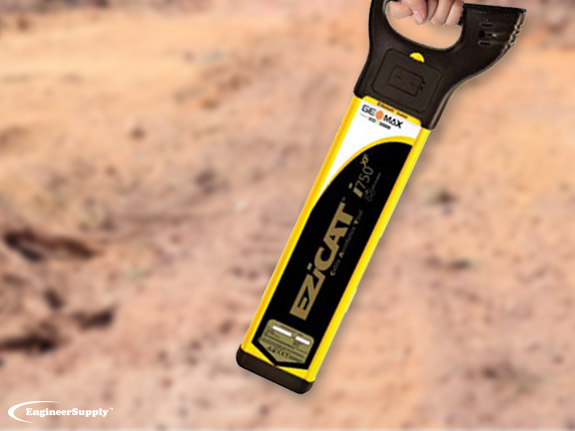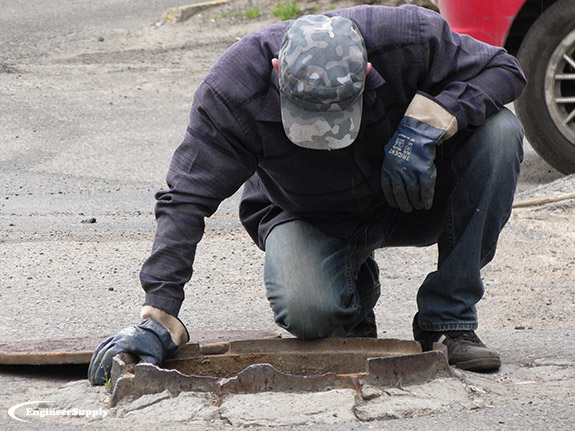Underground Utility Locating: Marking with GPR

Locating underground utilities is an imperative prerequisite of breaking ground on a construction site. If you dig without knowing what’s below, you can easily hit a utility line and create a dangerous situation. How can you prevent this and ensure that you’re digging safely?
Utility locating services can help you identify the location of underground utilities so that they are properly marked and avoided. They accomplish this by using specialized
utility locating equipment, including a ground penetrating radar, or GPR. Here’s what you need to know about GPR technology and its use as an
underground utility locator.

How Does GPR Work to Detect Utilities?
Detecting utilities is a complex process of determining the potential location, measuring characteristics of the area, and testing to see if and where utilities might be. GPS helps assist in this process by providing the tools to test the area. GPR detects the presence of utility lines through the following process:
- Antennas are used to transmit and receive frequencies
- Radio waves are emitted to penetrate the ground, and the signal that reflects is detected by the antenna
- This reflected signal provides visual data revealing the location, size, and depth of objects
The visual data produced by GPR is then interpreted by a professional to pinpoint exactly where a utility line might be. You can then determine where it is safe to dig around them and proceed with your project.
What Kinds of GPR Devices Are There?
GPR devices all function based on the same principle, but different devices have different features and applications. It’s important to find the
GPR device that’s right for your individual project. The main types of
GPR devices are as follows:
- Modular systems: Modular GPR products are unique because of their versatility. These can typically be used for utility location, concrete scanning, and geophysical measurements.
- All in one systems: These user-friendly devices are designed to be simple and straightforward. They typically focus on a single function such as utility location.
- Concrete scanners: As the name suggests, these devices are dedicated to scanning concrete and detecting any utility lines that may be below it
There are a range of different options when it comes to
utility locating equipment. Which GPR device you opt for depends on what kind of terrain you need to measure and what kind of information you need to collect. Any of these types of devices will help you locate utility lines, though, so that you can safely dig and avoid a potentially dangerous situation.

Frequently Asked Questions
How deep can a GPR measure?

Different
GPR devices have different measurement capabilities. Some more advanced models have measurement capability of up to 100 feet, while others measure only a few feet below the surface.
What can be located by a GPR?
Of course,
utility locating equipment is primary used to determine the placement of utility lines below ground, but that’s not the only object that can be detected by a GPR system. It also detects metal objects, non-metal objects, voids, and underground anomalies.
What materials can a GPR see through?
A GPR device’s imaging ability depends on what kind of material it is programmed to emit signals past. Some devices can only produce imaging through a terrain of dirt, while others are designed specifically for imaging through concrete and other materials.The kind of accessories you need will depend on the kind of job you’re doing! Consider the list included above to find the right accessory for your needs.
Is GPR 100% accurate?
Some devices come with a 100% accuracy guarantee, but for the most part, GPR technology is like any other technology and cannot be said to be entirely flawless. It is, however, the most accurate form of underground imaging available.
When should I use GPR?
If you are planning to dig or complete construction on a site that has previously not been developed — or even if it has — you need to use a
GPR device to locate and avoid utility lines.
GPR Can Prevent Hitting a Utility Line
GPR devices are one of the most essential pieces of equipment on a construction site. You need to know where utility lines are located, and there’s no better way to gain that information that through use of a GPR. Be sure to choose the right model and use it correctly to obtain the most accurate results, and trust Engineer Supply for the
best selection of devices. Call 800-591-8907 for more information on available GPR equipment.
Related Utility Locator Articles